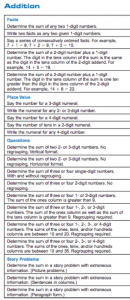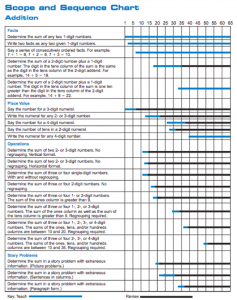When a plane crashes, we examine every detail about the aircraft’s mechanics. When a building collapses, we examine every detail about the building’s construction. And when students fail to learn, we for some reason skip examining every detail about instructional design.
If an education system fails to ensure that every first grader can read the simple sentence “The name of the dog is Puppy,” and every third grader can solve a two-digit subtraction problem such as 46 minus 17, then we must interrogate the details of reading and mathematics program design.
The details of effective instructional design – just like details of building an airplane or constructing a building – are too high stakes and too complex to be left to intuition, memory or the whims of individual preference. We need a clear set of best practices.
Direct Instruction (DI) is probably the most empirically-validated type of structured pedagogy, its “purpose is to teach subject matter efficiently so that all the students learn all the material in the minimum amount of time.” One of the many things I learned from studying DI programs was how textbooks include a pervasive flaw undermining efforts to solve the global learning crisis.
Here is an example of a list of 21 distinct learning goals:

In a typical textbook, each of these learning goals would be accompanied by a lesson number. The table of contents might look something like:
Lesson 1. Determine the sum of any two 1-digit numbers.
Lesson 2. Write two facts as any two given 1-digit operations.
The flaw: Most lessons are mostly ‘new’ material. Think of it as a grocery list of learning goals. After a year or two of classroom teaching experience, it became abundantly clear to me that in order to ensure what you teach ‘sticks’ with all kids they need more than one lesson of practice. But how many lessons do students need to master each learning goal? For example, would it be good enough to simply extend the number of days spent on each goal? A textbook’s table of contents would then would look something like:
Lessons 1-3. Determine the sum of any two 1-digit numbers.
Lessons 4-6. Write two facts as any two given 1-digit operations.
This approach is still not precise enough to ensure that all students master 21 goals. Why not? Firstly, because assuming that an arbitrary guess for the number of trials required to master something is correct is inadequate whether your guess is 1 lesson or 3 lessons. The answer is knowable, but it requires testing it.
Secondly, there is plenty of research demonstrating the benefits of practice distributed over time – sometimes called spacing. Long term retention is improved when previously learned material is periodically revisited and practiced. The problem within most textbooks then is that information from one chapter is seldom revisited in subsequent chapters.
So what do DI programs suggest about how to fix the brokenness of most textbooks?
The fix: Most lessons should be ‘review’ material. Think of it like a Gantt chart showing how each goal is practiced repeatedly across many lessons. Take a look at this scope and sequence for some of Corrective Mathematics, a Direct Instruction program designed for older students (Grades 3-12) who perform a year or more behind grade level.

There are a few things worth pointing out here: Firstly, notice the key at the bottom showing that blue lines represent when a learning goal is taught versus black lines representing when the learning goal is reviewed. Secondly, notice how the scope and sequence layout allows you to see how each and every learning goal is repeated across not just two or three but 20+ lessons. The reason that DI programs are able to ensure a sufficient number of trials is because the programs have been tested with precise attention to the number of trials it takes for all students to master every learning goal. Additionally, they have built-in flexibility for teachers to repeat certain exercises or to offer parallel lessons in order to ensure all students are firm before moving on to the next step in the learning process.
The problem with broken textbooks is from lesson to lesson and chapter to chapter they move on to new learning goals without ever revisiting the old ones. There are a lot more ways that DI programs exhibit highly effective instructional design ensuring that most lessons in a program are mostly review.
